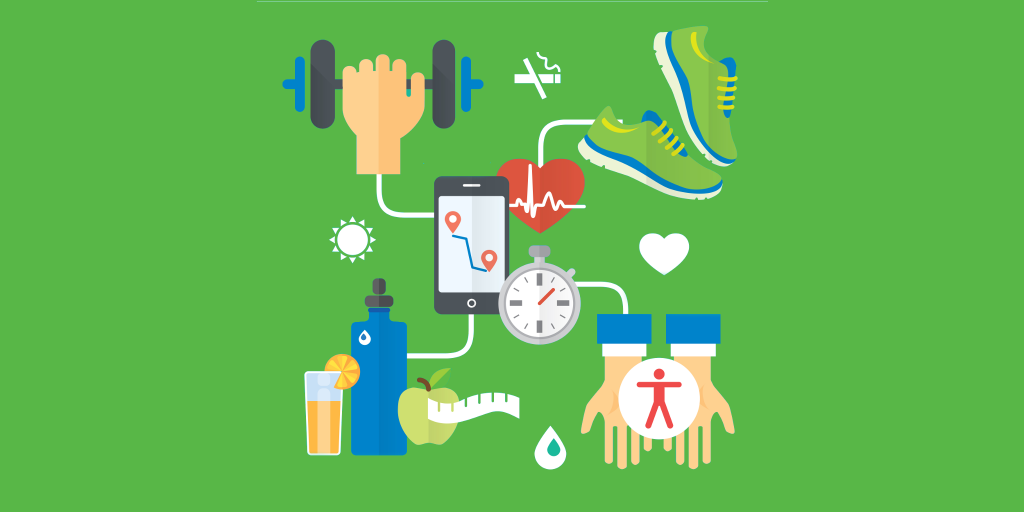It’s official – Christmas is well and truly over. The tinsel and decorations have been put away for another year and the wrapping paper’s in the bin. No more lazing about in pyjamas all day watching festive films. No more reaching out for one last mince pie. It’s time to look to the future and think about what you’re going to achieve in 2018. So, this January, (like every January), I’m joining millions of people around the globe who are making new year’s resolutions and promises.
You may well be one of those millions too. And even though 80% of us will have broken our resolutions by February, it’s inevitable that we’ll repeat the process when January 2019 rolls around. Why do we put ourselves through this? Well, as humans, we’re on a never-ending journey of self-improvement, constantly striving to be better.
But where most fail, some succeed. How do they do it?
It seems that for anything we can improve at, there’s an app to track it and make it quantifiable.
Do life logging apps really make a difference?
So, this January more than ever, the hunger to be our best is in the air. We’ve become obsessed with our ‘quantifiable self’. Clearly, we feel powerful when we can control things in our lives, such as our health. Apps such as MyFitnessPal, Headspace and Fitbit provide us with data that should enable us to change our ways. This regular lifelogging means that we can access information about our stress levels, menstruation, mood, heart rate, diet and exercise. Useful, huh?
Well. Actually, these numbers are only useful if we know what to do with them.
This year Santa brought me a Fitbit. I’ve got data at my fingers tips. And yet, I’m still not quite sure what I’m learning from it. Surely, to achieve my new year’s resolution, improve and develop I need to know what insights this data provides?
Importantly, I also need to have defined my behavioural goals to start with.
Unwrapping my Fitbit has certainly got me thinking about the possibilities of analytics and how L&D can learn from the rise of lifelogging apps and devices to appeal to the quantified learner.
The quantified learner
I’m unashamed to admit that my Fitbit slightly baffles me. It’s tracking my every move and churning out information left, right and centre, but I have no idea what I’m meant to be doing with these numbers. But, when I reflect on the way that Saffron designs courses, it’s clear that I haven’t yet set myself clear behavioural outcomes, so the data that I’m getting isn’t being contextualised against those outcomes and setting me up for applying that knowledge into my daily fitness regime and setting me up for success!
More than ever, it’s clear to me that focussed behavioural goals combined with relevant, formative feedback (which I create as part of any learning intervention) is what I’m craving from my app! I’m sure that future versions will include an AI app that will do just that.
Motivated momentum
Many lifestyle apps motivate users by appealing to our drive to maintain an unbroken high score or completion time. We apply similar gamification elements and insights from behavioural science in our learning when we use hot triggers and scoring to motivate learners and promote replay which helps with habit formation. Positive rewards and recognition push users closer to forming new habits or breaking old ones.
But what happens when my willpower starts wavering in a few months’ time? Well, a truly immersive narrative can not only engage learners, but will appeal to our deepest instincts to act as a trigger for lasting behaviour change. Apps such as the running app Zombies, Run! submerge runners in a fictional world where their instinct to run away from fear acts as a trigger for physical activity. Most couch potatoes need some kind of trigger to get moving! Similarly, leading learners through an engaging overarching narrative, one that makes them less conscious of the learning taking place and resonates with them emotionally, means it’s more likely to be completed – and applied.
Habits for life
We see the value in linking the digital and the human. What do I mean by that? Well, think about the power of combining tracked life data with the insights of a real life personal trainer. Similarly, providing the right blended learning solutions can offer a detailed output that supports ongoing coaching and conversations from a work mentor. The kind that boosts positive habit formation long after the formal part of the learning is over. That’s true behavioural change.
At Saffron, we design digital learning that acts (and often looks) like these apps and includes diagnostics that tap into the innate curiosity we all have about how we measure up, how we compare against our peers and what changes in behaviour could lead to in terms of results. The rise of the quantified self doesn’t look like it’s going to slow down anytime soon and data tracking and performance measurement in learning needs to keep up – not with recording completions, but with quantifying application of learning in the workplace. Zombies, Learn! Anyone?





